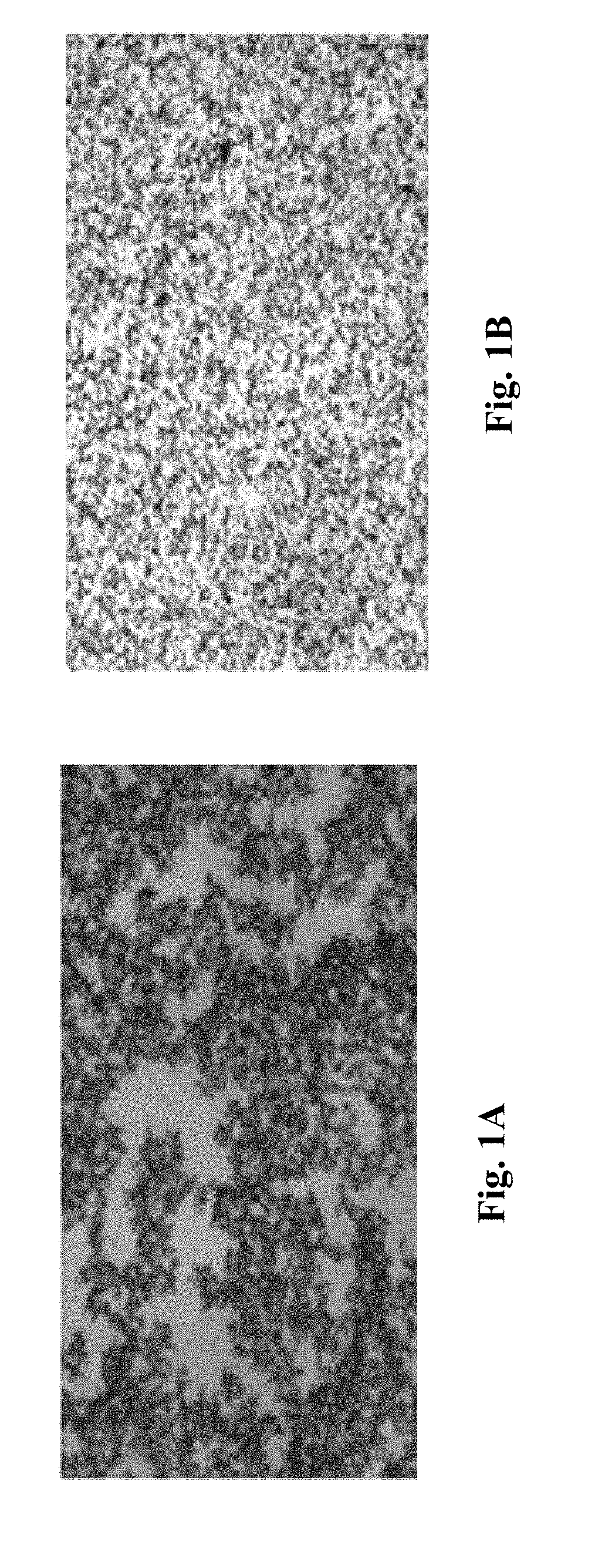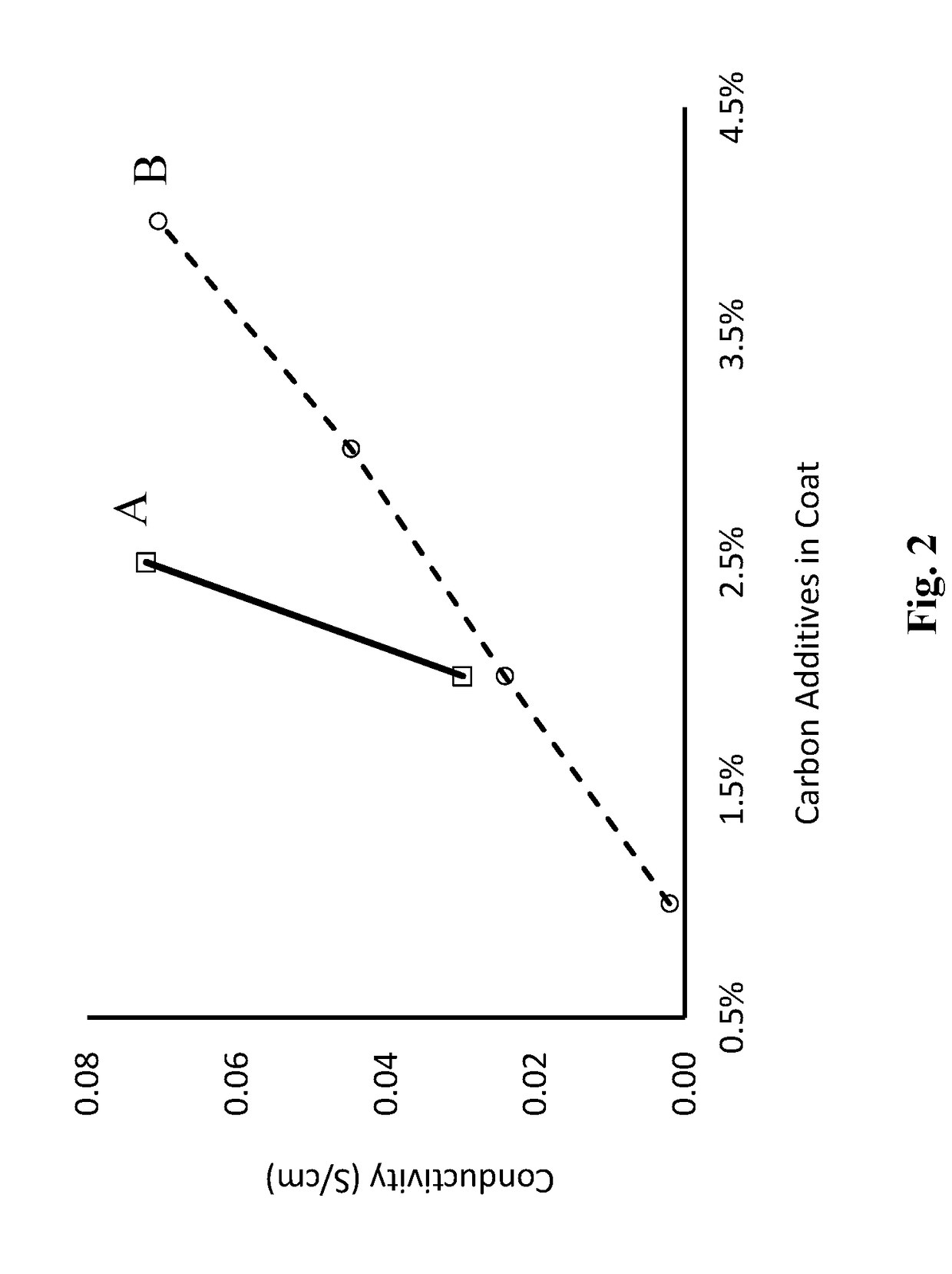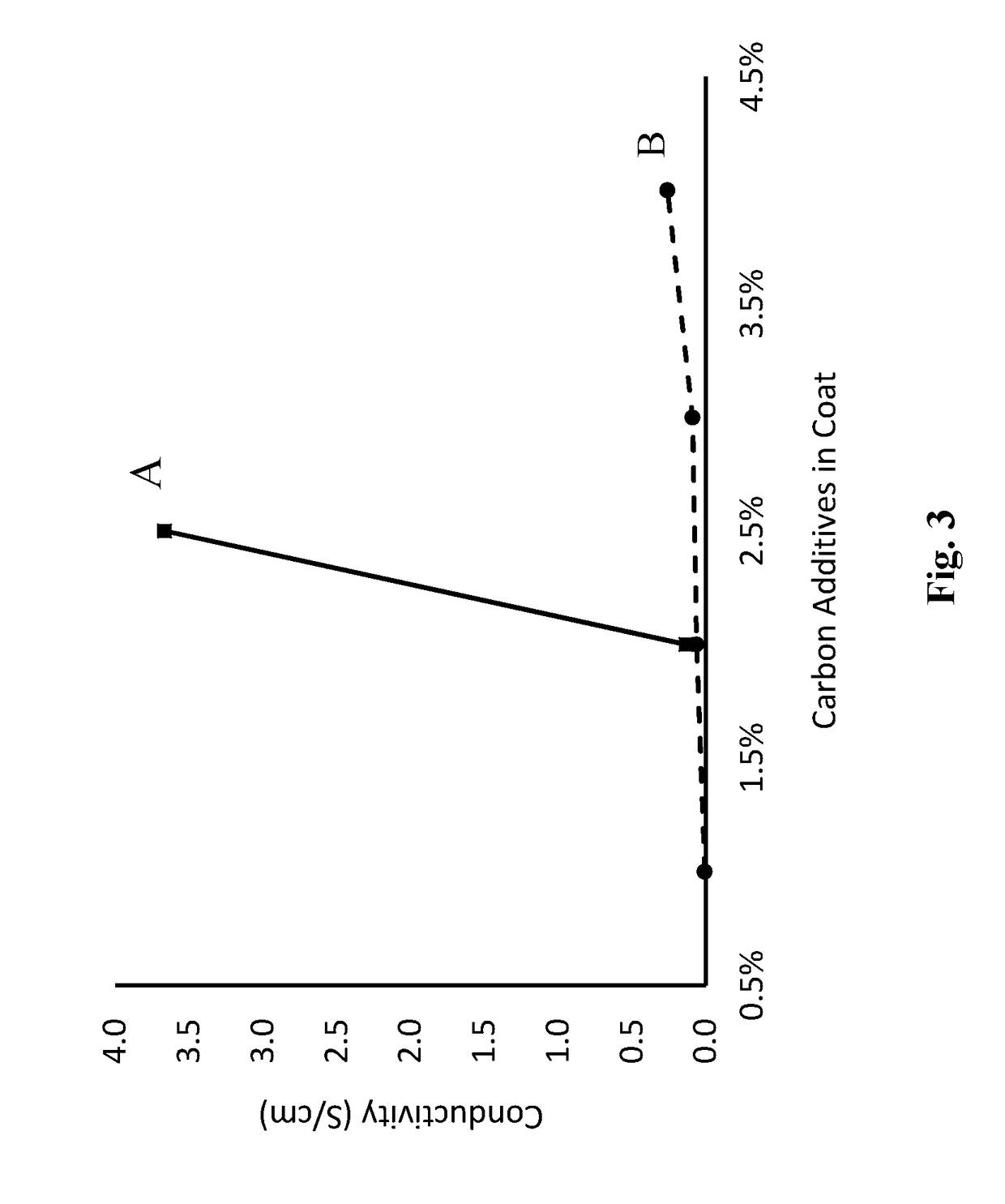Electrode Slurries Containing Halogenated Graphene Nanoplatelets, and Production and Uses Thereof
- Summary
- Abstract
- Description
- Claims
- Application Information
AI Technical Summary
Benefits of technology
Problems solved by technology
Method used
Image
Examples
example 1
[0065]Several individual 2-gram samples of natural graphite, with 35% of the particles larger than 300 microns, and 85% of the particles larger than 180 microns (Asbury Carbons, Asbury, N.J.), were contacted with 0.2 mL, 0.3 mL, 0.5 mL, 1 mL, 1.5 mL or 3 mL of liquid bromine (Br2) for 24 hours at room temperature. After 24 hours, the color in vials from the bromine vapor was darker as the bromine vapor concentration in the vials increased. The resultant bromine-intercalated materials were analyzed by X-ray powder diffraction (XRD). Once the bromine vapor reached saturation, as shown by the presence of liquid bromine, “stage-2” bromine-intercalated graphite was formed. In the intercalation step of all the rest of the these Examples, except when specifically mentioned otherwise, saturated bromine vapor pressure was maintained during the intercalation step in order to obtain stage-2 bromine-intercalated graphite.
example 2
[0066]Natural graphite (4 g), of the same particle size as used in Example 1, was contacted with 4 g of liquid bromine for 64 hours at room temperature. Excess liquid bromine was present to ensure the formation of stage-2 bromine-intercalated graphite. All of the stage-2 bromine-intercalated graphite was continuously fed during a period of 45 minutes into a drop tube reactor (5 cm diameter) that had been pre-purged with nitrogen, while the reactor was maintained at 900° C. Bromine vapor pressure was maintained in the drop reactor for 60 minutes while the temperature of the reactor was kept at 900° C. The solid material in the reactor was cooled with a nitrogen flow.
[0067]Some of the cooled solid material (3 g) was contacted with liquid bromine (4 g) for 16 hours at room temperature with excess liquid bromine present to ensure the formation of stage-2 bromine-intercalated graphite. Then all of this stage-2 bromine-intercalated graphite was continuously fed within 30 minutes into a dr...
example 3
[0075]Natural graphite (4 g), of the same particle size as used in Example 1, was contacted with 6 g of liquid bromine for 48 hours at room temperature. Excess liquid bromine was present to ensure the formation of stage-2 bromine-intercalated graphite. All of the stage-2 bromine-intercalated graphite was continuously fed during a period of 60 minutes into a drop tube reactor (5 cm diameter) that had been pre-purged with nitrogen, while the reactor was maintained at 900° C. Bromine vapor pressure was maintained in the drop reactor for 60 minutes while the temperature of the reactor was kept at 900° C. The solid material in the reactor was cooled with a nitrogen flow.
[0076]Some of the cooled solid material (3 g) was contacted with liquid bromine (4.5 g) for 16 hours at room temperature with excess liquid bromine present to ensure the formation of stage-2 bromine-intercalated graphite. Then all of this stage-2 bromine-intercalated graphite was continuously fed during 30 minutes into a ...
PUM
| Property | Measurement | Unit |
|---|---|---|
| Temperature | aaaaa | aaaaa |
| Thickness | aaaaa | aaaaa |
| Size | aaaaa | aaaaa |
Abstract
Description
Claims
Application Information
 Login to View More
Login to View More - R&D
- Intellectual Property
- Life Sciences
- Materials
- Tech Scout
- Unparalleled Data Quality
- Higher Quality Content
- 60% Fewer Hallucinations
Browse by: Latest US Patents, China's latest patents, Technical Efficacy Thesaurus, Application Domain, Technology Topic, Popular Technical Reports.
© 2025 PatSnap. All rights reserved.Legal|Privacy policy|Modern Slavery Act Transparency Statement|Sitemap|About US| Contact US: help@patsnap.com



